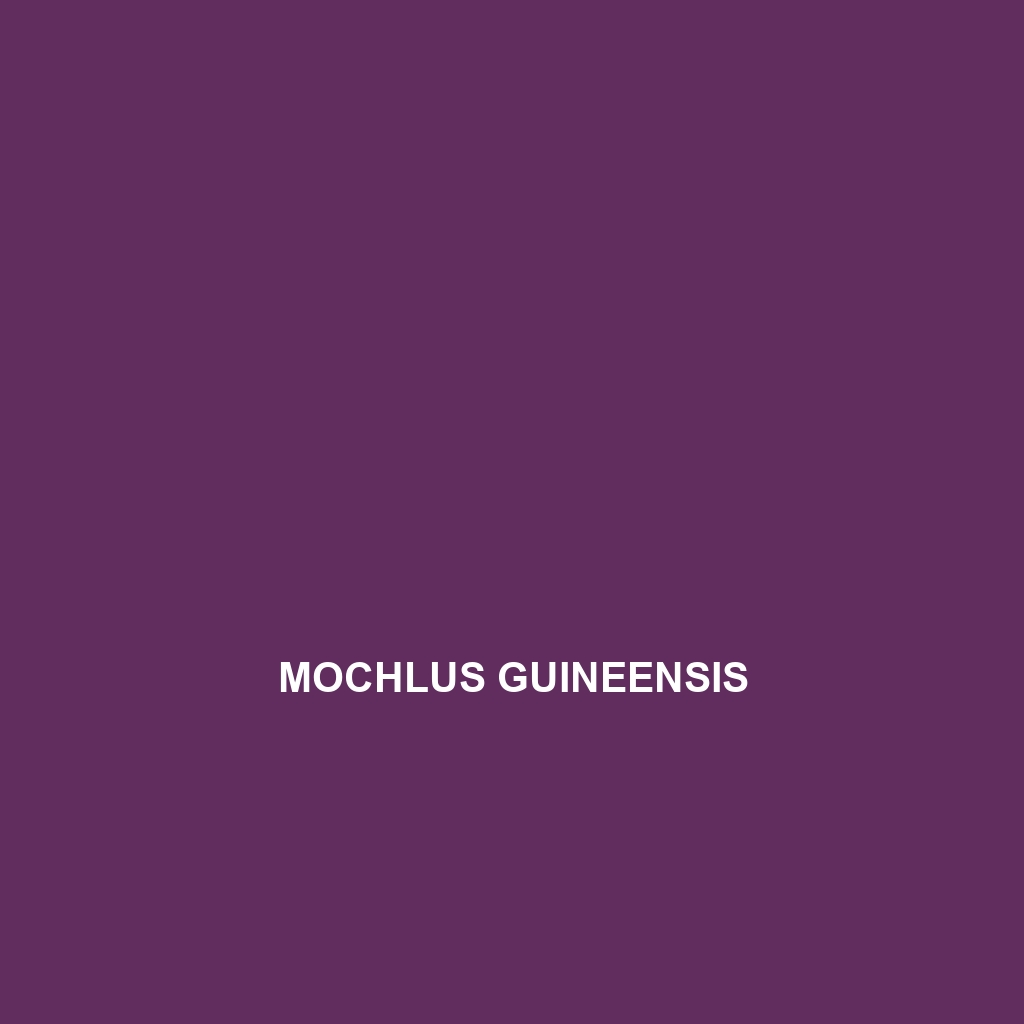Common Name
Mochlus guineensis
Scientific Name
Mochlus guineensis
Habitat
Mochlus guineensis, commonly known as the Guinea skink, is primarily found in the lush landscapes of Western Africa. This species thrives in rainforests, where the humidity and warm temperatures create an ideal environment for its survival. It is often located near streams and water catchments that provide the necessary moisture. Additionally, the Guinea skink can be found in savannas and temperate forests, adapting to both humid and semi-arid conditions. These varied habitats contribute to its diverse lifestyle, allowing it to evade many natural predators while searching for food and shelter.
Physical Characteristics
The Guinea skink is a slender, elongated reptile that typically measures between 15 to 25 centimeters in length. This species showcases a unique, shiny, and smooth scale appearance, reflecting light and providing it with a sleek look. The coloration varies from brown to olive green, often with lighter stripes running along its body, which helps it blend into its natural surroundings. One of the distinguishing features of Mochlus guineensis is its short limbs and elongated tail, which provides agility for quick movements through dense vegetation. The presence of functional ear openings and well-developed eyesight makes it adept at detecting both prey and possible threats.
Behavior
Mochlus guineensis exhibits predominantly nocturnal behavior, emerging at dusk to forage for food and engage in social interactions. During the day, these skinks tend to hide beneath leaf litter, rocks, or within tree crevices, minimizing exposure to predators. Their social structures can be complex, with individuals often found basking in small groups. Mating rituals typically occur during the wet season, marked by the males displaying dominance through head-bobs and tail movements to attract females.
Diet
The dietary habits of Mochlus guineensis classify it as an insectivore, primarily feeding on a variety of insects such as ants, beetles, and larvae. Its sharp, pointed teeth help it capture and consume prey efficiently. This skink is also known to occasionally eat small fruits and seeds, allowing it to adapt to fluctuations in prey availability. Feeding patterns are opportunistic, and the skinks utilize their swift movements and keen eyesight to hunt down food during their active periods.
Reproduction
The reproductive cycle of Mochlus guineensis typically coincides with the rainy season, which provides optimal conditions for raising young. Mating occurs after elaborate displays between males and females. After a gestation period of approximately 6 to 8 weeks, females lay clutches of 3 to 10 eggs in hidden nests within the leaf litter. Parental care is minimal post-oviposition; however, the eggs are often strategically placed in moist, shaded locations to protect them from desiccation and predators. Upon hatching, the young skinks are independent and must quickly acclimatize to their environment to survive.
Conservation Status
The conservation status of Mochlus guineensis is currently classified as Least Concern according to the IUCN Red List. However, like many reptiles, it faces threats from habitat destruction due to deforestation, agricultural expansion, and human encroachment. Conservation efforts are essential to monitor populations and protect their natural habitats. Current initiatives include habitat conservation projects and public awareness campaigns to mitigate the impact of human activities on these skinks.
Interesting Facts
One interesting fact about Mochlus guineensis is its ability to regenerate its tail after it has been lost, a common escape tactic in many lizard species. This regeneration helps them evade predators and continue their survival in the wild. Additionally, their shiny scales serve not only for camouflage but also for regulating body temperature, reflecting excess sunlight.
Role in Ecosystem
Mochlus guineensis plays a significant ecological role in its habitat. As an insectivore, it helps control insect populations, contributing to the overall health of the ecosystem. Furthermore, the skink acts as both predator and prey — while it hunts smaller insects, it is also a food source for larger reptiles and birds of prey. This dual role emphasizes its importance in maintaining the balance within the food web of the rainforests and savannas it inhabits.
